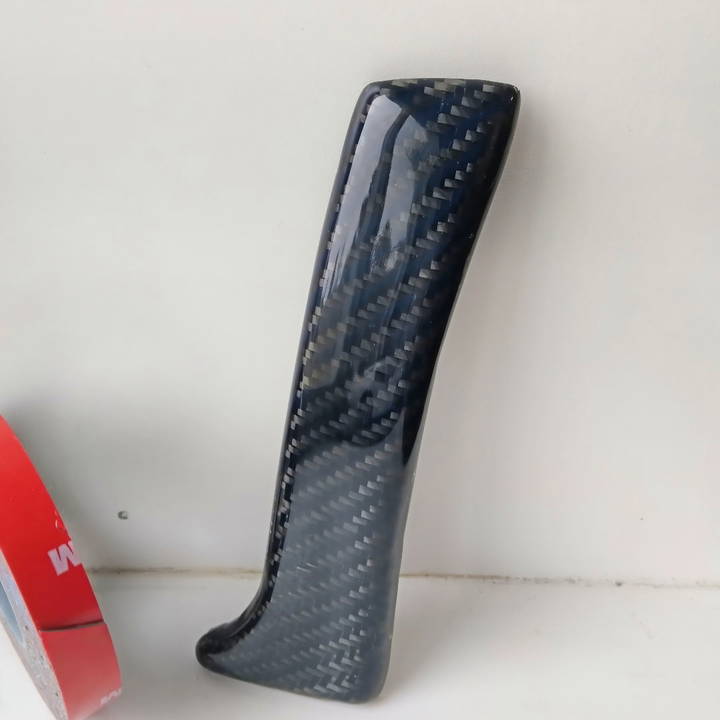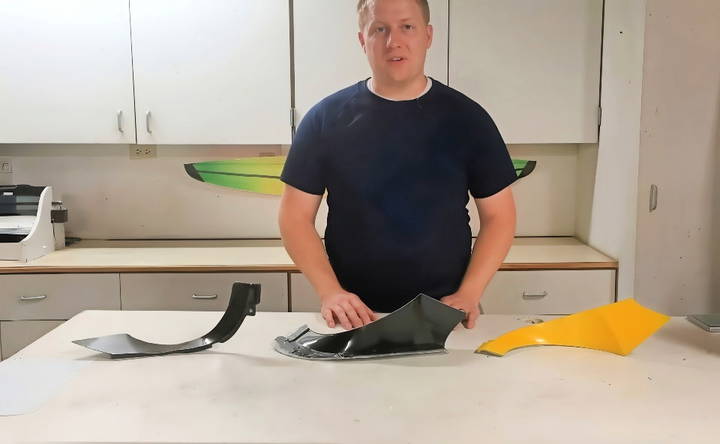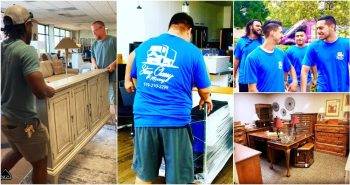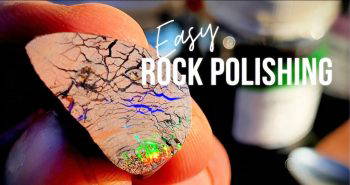Making carbon fiber parts at home can be both rewarding and functional. This sturdy material is valued for its lightweight yet durable properties. To begin, gather materials like carbon fiber fabric, epoxy resin, cutting tools, and safety gear. Follow a step-by-step process to ensure each part is precisely crafted and securely bonded. Proper preparation and patience are essential to crafting effective and lasting carbon fiber parts.

If you've ever wondered how to make carbon fiber parts, you're in the right place. This guide will walk you through the essentials, from selecting materials to final detailing. Understanding these basics will help you start making your own carbon fiber creations.
Get ready to explore the exciting process of turning raw materials into strong, lightweight components. Let's dive deeper into the details of DIY carbon fiber work in the following section.
Introduction to Carbon Fiber
Carbon fiber is a lightweight, strong material that has revolutionized many industries. It's made from thin strands of carbon that are tightly woven and set in resin. This combination builds a composite material that is both stronger and lighter than many metals, making it an excellent choice for high-performance applications.
What is Carbon Fiber?
At its core, carbon fiber is composed of long chains of carbon atoms, bound together in a crystalline formation. These chains are incredibly strong and can withstand high tension. When woven together, they form a fabric-like material that needs to be combined with a resin to build a rigid structure.
Why Use Carbon Fiber?
The primary reason to use carbon fiber is its strength-to-weight ratio. It's five times stronger than steel and twice as stiff, yet it weighs about two-thirds less. This makes it an ideal material for anything that benefits from being light and strong, such as sports equipment, aerospace, automotive components, and even in the construction of modern buildings.
The Benefits of Carbon Fiber
- Lightweight: Its low weight reduces fuel consumption in vehicles and makes sports equipment easier to handle.
- High Strength: It can endure substantial stress without stretching or bending.
- Corrosion Resistance: Unlike metals, carbon fiber doesn't rust or corrode over time.
- Durability: It has a long lifespan and maintains its properties over time.
- Flexibility: It can be molded into complex shapes and sizes.
How is Carbon Fiber Made?
The process of making carbon fiber is intricate and involves several steps:
- Polyacrylonitrile (PAN) Production: The journey begins with making PAN, a polymer that is the precursor to carbon fiber.
- Spinning: PAN is spun into fibers, which are then washed and stretched.
- Stabilizing: The fibers are heated to a low temperature to chemically alter their structure, making them more stable.
- Carbonizing: The stabilized fibers are then exposed to very high temperatures, which removes non-carbon elements.
- Surface Treatment: This step increases the bonding properties of the fibers.
- Sizing: Finally, the fibers are coated with materials to protect them and aid in handling.
Applications of Carbon Fiber
Carbon fiber's unique properties have led to its use in a wide range of applications:
- Aerospace: For aircraft and spacecraft components.
- Automotive: In the production of cars, especially high-performance vehicles.
- Sports: Used in bicycles, golf clubs, and tennis rackets.
- Medical: For prosthetic limbs and supportive devices.
- Construction: In the reinforcement of buildings and bridges.
Carbon fiber is strong and light, offering many benefits. It's versatile and used in various fields, enhancing manufacturing and design. As technology progresses, we'll see more innovative uses for it.
Materials You Require and Why
- Foam Board and Packing Tape: Essential for making a flange around the part, offering a non-stick surface and an area to handle the mold.
- Hot Glue: For securing the foam board. Provides a quick and sturdy hold.
- Partall #2 Wax and PVA (Polyvinyl Alcohol): These act as release agents, ensuring your mold doesn't become a permanent addition to the original part.
- Epoxy Resin, Hardener, Colloidal Silica, and Graphite Powder: The base of your mold and carbon fiber part. The silica thickens the resin for the tooling coat, and graphite powder darkens it for visual appeal.
- Fiberglass Cloth: Builds the structure of the mold. The alternating weave pattern (0/90 and * ±45 degrees) ensures dimensional stability.
- Mixing Supplies: Accurate scales, mixing sticks, and containers for preparing epoxy mixtures.
- Safety Gear: Gloves, safety glasses, and a respirator. The importance of health and safety cannot be overstated.
- Dremel Tool and Sandpaper: For post-curing finishing touches.
Step by Step Instructions
Learn step-by-step instructions on making carbon fiber parts, from building a flange to applying fiberglass and making the final product.
Building a Flange
Beginning with making a flange was my first lesson in patience. Ensuring a seamless bond between the foam board and part required precise work with hot glue. This flange would later provide much-needed leverage for handling the mold.
Applying Release Agents
Applying Partall #2 wax meticulously on the part and then buffing it out was meditative. The wax left a shiny surface, ready for the next step: PVA application. Compared to the wax, PVA felt like painting with water, requiring a gentle touch with a foam brush.
Creating the Tooling Coat
The concoction for the tooling coat involved epoxy resin, hardener, colloidal silica for thickness, and graphite powder for color. Achieving the "goopy" consistency needed for it to stick yet not run off vertical surfaces was a game of precision.
Applying Fiberglass
Layering the fiberglass was like weaving a blanket that would solidify into the skeleton of the mold. Alternating the orientation of each layer was crucial; it's what gives the mold its strength and prevents warping.
From Mold to Carbon Fiber Part
With the mold cured and ready, I found myself on the cusp of making the actual carbon fiber piece. Here, my earlier efforts in ensuring smooth application and careful layering paid off. Watching the carbon fiber conform to the contours of the mold was rewarding, but not without its hiccups, such as ensuring the resin reached every nook without forming air bubbles.
Lesson Learned: The Importance of Patience
Patience was my greatest ally. Whether allowing the tooling coat to reach the perfect tackiness or ensuring each layer of fiberglass was thoroughly saturated, every step required a calm, collected approach.
The Final Product
De-molding revealed a part that closely mirrored the original, with a few minor imperfections serving as reminders of the learning curve. Trimming and sanding the edges gave the piece a professional finish, with the glossy sheen of carbon fiber making all the effort worthwhile.
Latest Techniques in Carbon Fiber Manufacturing
The manufacturing of carbon fiber is a field that is constantly evolving, with new techniques and technologies emerging to improve efficiency and performance. Here, we'll explore some of the most recent advancements that are shaping the future of carbon fiber production.
3D Printing for Molds
One significant advancement is the use of 3D printing technology for making molds. This method allows for rapid prototyping and production of complex shapes that would be difficult or expensive to make using traditional methods. It's particularly useful for custom or small-batch production runs.
Advanced Laminating Techniques
Laminating is a critical step in carbon fiber manufacturing, where layers of carbon fiber cloth are infused with resin to form a solid part. New techniques in this area include automated lay-up systems and vacuum-assisted resin transfer molding (VARTM), which ensure a more consistent and uniform distribution of resin, reducing waste and improving the quality of the final product.
Bio-based Materials
The incorporation of bio-based materials into carbon fiber composites is a growing trend. These materials are derived from renewable resources and can reduce the environmental impact of production. They also offer potential cost savings and can enhance certain properties of the composite, such as biodegradability.
Additive Manufacturing (AM)
Additive Manufacturing, or AM, refers to a family of technologies that build 3D objects by adding a layer-upon layer of material. In carbon fiber manufacturing, AM techniques like stereolithography (SLA), fused deposition molding (FDM), and selective laser sintering (SLS) are being used to build detailed and complex components that would otherwise be impossible to produce.
CNC Machining
CNC machining is another area where advancements have been made. This process involves the use of computer-controlled machine tools to shape carbon fiber materials. With the latest advancements, CNC machining can produce carbon fiber parts with greater precision and at a faster rate than ever before.
Surface Treatment and Sizing
After carbonization, the surface of carbon fibers may not be fully compatible with the resins used in composites. New surface treatment methods have been developed to improve this compatibility. These treatments can include slight oxidation or etching with chemicals to enhance the bonding properties of the fibers.
In summary, new carbon fiber manufacturing techniques are enhancing efficiency, reducing costs, and becoming eco-friendly. As these technologies advance, more innovative uses for carbon fiber are expected across various industries.

Design Considerations
When designing with carbon fiber, it's essential to understand the material's unique characteristics and how they can be optimized for your specific application. Here are some key considerations to keep in mind:
Understanding the Material
Carbon fiber is known for its strength and lightweight properties, but it's also important to consider its stiffness, thermal expansion, and how it interacts with other materials. Knowing these properties will guide you in designing parts that leverage carbon fiber's strengths while mitigating its limitations.
Fiber Orientation
The direction in which the carbon fibers are laid out in the composite plays a crucial role in determining the strength and stiffness of the final part. The fibers are strongest along their length, so aligning them with the anticipated load paths will maximize the part's performance.
Resin Choice
The resin that holds the carbon fibers together also significantly impacts the part's properties. Different resins offer varying levels of durability, flexibility, and resistance to environmental factors. Selecting the right resin for your application is as critical as the fiber layout.
Complexity and Cost
While carbon fiber allows for the creation of complex shapes, the more intricate the design, the higher the manufacturing costs. It's important to balance design complexity with practicality and cost-effectiveness.
Environmental Considerations
Carbon fiber parts are durable, but they can be challenging to recycle. Designing for disassembly can help mitigate this issue, allowing for easier recycling or repurposing of the material at the end of the product's life cycle.
Safety and Handling
Carbon fiber manufacturing involves chemicals and processes that require careful handling. Safety should be a primary concern in the design phase, ensuring that the parts can be manufactured without undue risk to workers.
By considering these factors, you can make carbon fiber parts that are high-performing, reliable, cost-effective, and eco-friendly. Good design balances all these elements to meet your project's needs.
Troubleshooting Common Issues
Working with carbon fiber can sometimes be as challenging as it is rewarding. Here are some common issues that may arise during the manufacturing process and practical solutions to address them.
Delamination
- Delamination occurs when layers of the carbon fiber composite separate. This can be caused by inadequate curing or poor adhesion between layers.
- Solution: Ensure proper curing times and temperatures are followed. Use compatible resins and apply sufficient pressure during the lamination process to promote adhesion.
Void Formation
- Voids are air pockets that can form within the composite, weakening the structure.
- Solution: Apply a vacuum during the curing process to remove trapped air. Carefully lay up the carbon fiber layers, ensuring there are no gaps or overlaps that could trap air.
Uneven Curing
Uneven curing can lead to ‘hot spots' or areas that are under-cured, affecting the part's integrity.
- Solution: Monitor the temperature distribution closely during the curing process. Use a calibrated oven and ensure that the part is positioned for even heat exposure.
Fiber Misalignment
The strength of carbon fiber lies in the alignment of its fibers. Misalignment can drastically reduce the part's strength.
- Solution: Use guides or templates to ensure fibers are laid in the correct orientation. Automated lay-up systems can help maintain consistency.
Resin-Rich or Resin-Poor Areas
An imbalance in the resin-to-fiber ratio can lead to resin-rich or resin-poor areas, compromising the composite's quality.
- Solution: Measure the resin and fiber accurately. Use a controlled dispensing system for the resin and evenly distribute the fibers.
Surface Imperfections
- Surface imperfections such as wrinkles or bubbles can occur if the carbon fiber cloth is not laid smoothly or if there is excessive resin.
- Solution: Smooth out the carbon fiber cloth thoroughly before applying resin. Use just enough resin to saturate the fibers without pooling.
Be aware of common issues and solutions to improve the quality and reliability of your carbon fiber parts. Attention to detail and precise control in manufacturing are key to success with this material.
Safety Precautions
When working with carbon fiber, safety is paramount. The material's unique properties require specific handling techniques to ensure the well-being of everyone involved in its manufacturing and use. Here are some key safety precautions to consider:
Proper Ventilation
Carbon fiber processing can release small particles and fumes into the air. It's crucial to work in a well-ventilated area to minimize inhalation risks. Use exhaust fans or work outdoors if possible to maintain good air quality.
Personal Protective Equipment (PPE)
Always wear the appropriate PPE when handling carbon fiber. This includes:
- Respirators: Protect your lungs from fine particles with a respirator equipped with a HEPA filter.
- Gloves: Prevent skin irritation or cuts from the fibers by wearing gloves.
- Safety Glasses: Keep your eyes safe from dust and debris with safety glasses.
Handling and Storage
Handle carbon fiber materials with care to avoid making dust and debris. When not in use, store carbon fiber in a clean, dry place away from direct sunlight and extreme temperatures to prevent deterioration.
Dust Collection Systems
Consider using a dust collection system with HEPA filters to capture carbon fiber dust during cutting, sanding, or milling operations. This helps to keep the workspace clean and reduces the risk of respiratory problems.
Wet Methods
When cutting carbon fiber, use wet methods to suppress dust production. Applying water or a coolant while cutting can significantly reduce the amount of dust that becomes airborne.
Fire Safety
Carbon fiber is combustible, so it's important to have fire prevention measures in place. Keep flammable materials away from the work area and have fire extinguishers readily available.
Training and Procedures
Ensure that all personnel are properly trained in safe handling procedures for carbon fiber. Regularly review and update these procedures to reflect the latest safety standards.
Following these precautions ensures a safer environment for manufacturing and handling carbon fiber parts.
FAQs About How to Make Carbon Fiber Parts
Discover key FAQs about making carbon fiber parts, from materials to techniques. Unlock expert tips and insights for crafting durable, lightweight components.
Carbon fiber is a strong, lightweight material made from thin strands of carbon. It’s used in various applications where high strength-to-weight ratios are desired, such as in aerospace, automotive, and sporting goods.
First, apply a release agent to your mold to prevent the carbon fiber from sticking. Once dry, you can begin the process of laying the carbon fiber materials.
Begin by cutting the carbon fiber material to fit your mold. Mix the epoxy resin and hardener, then apply a thin coat to the mold. Lay the carbon fiber material onto the mold and press it into place, ensuring there are no air bubbles. Apply more resin over the top and repeat the process for additional layers until the desired thickness is achieved.
After laying the final layer, allow the part to cure as per the resin manufacturer’s instructions. This may take several hours to overnight. Once cured, you can remove the part from the mold and trim any excess material. Sanding and polishing can be done for a smooth finish.
Yes, 3D printing can be a valuable tool in the process of making carbon fiber parts. It can be used to build precise molds, which are essential for shaping the carbon fiber material. This method can lower costs and save time, especially for complex parts or prototypes. When using 3D printed molds, it's important to ensure they are properly sealed and prepared with a release agent before laying the carbon fiber.
Final Thoughts
In conclusion, learning how to make carbon fiber parts can be an exciting and rewarding experience. This guide on DIY carbonfiber offers detailed steps to help you build strong and lightweight structures. By following these instructions, you can gain valuable skills and expand your crafting capabilities. Dive in and enjoy the process of making your own unique carbon fiber parts.













